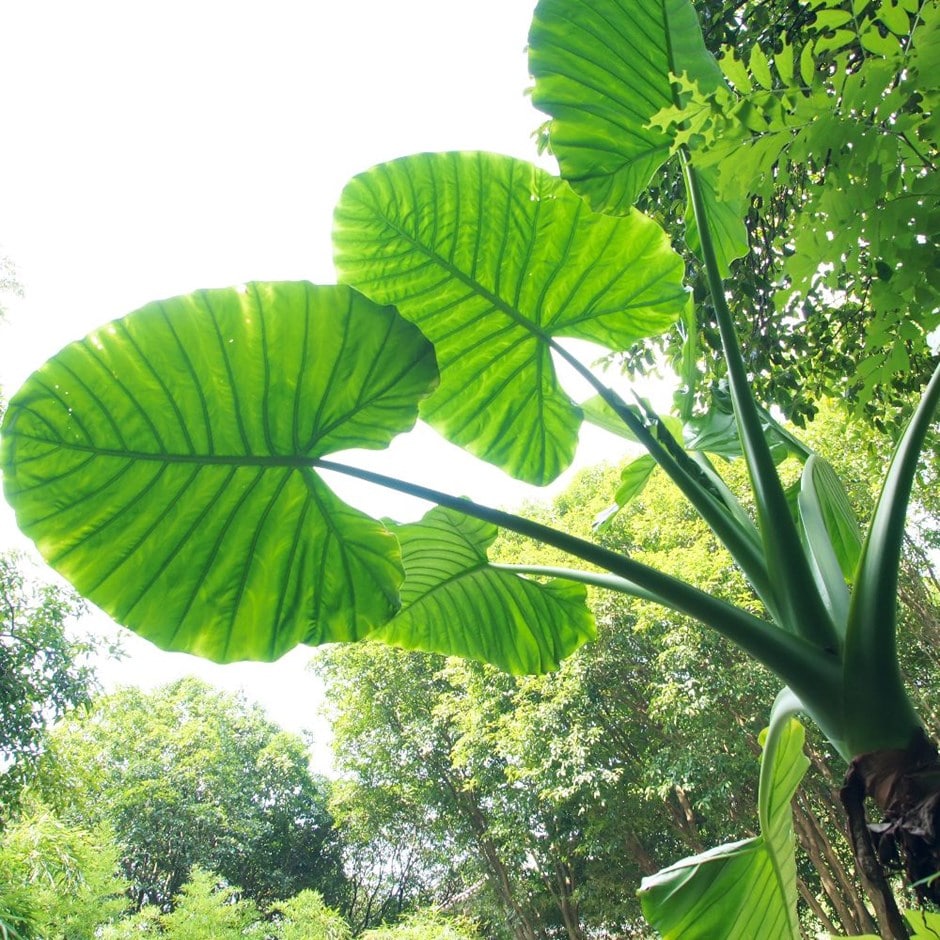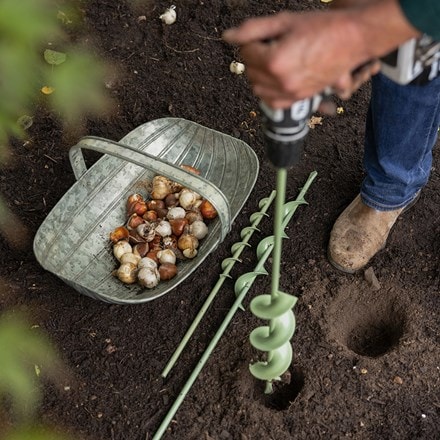Alocasia macrorrhiza
giant taro / elephants ears
- 1 × bulb
- £24.99
- available to order from winter
- 2 + 1 FREE bulbs
- £49.98 £16.66 each
- available to order from winter
Delivery options
- Bulbs (only) £4.99
- Position: full sun or partial shade
- Soil: moist to boggy, slightly acidic soil
- Rate of growth: fast
- Hardiness: frost tender (will need winter protection)
- Bulb size: 9/11
Alocasia macrorrhiza, also known as giant elephant’s ear, is a bold, tropical-looking foliage plant with enormous, glossy green leaves held on tall, upright stems. It can reach impressive heights in the right conditions, making it ideal for adding architectural interest to patios, courtyards, or exotic-style gardens during the warmer months.
In the UK, it’s best grown in a large container so it can be easily moved indoors for winter. Use it as a striking focal point on a sunny, sheltered terrace or among other lush foliage plants in summer displays, where its dramatic shape adds strong visual impact.
In the UK, it’s best grown in a large container so it can be easily moved indoors for winter. Use it as a striking focal point on a sunny, sheltered terrace or among other lush foliage plants in summer displays, where its dramatic shape adds strong visual impact.
'Giant Taro' can be planted outside after frost, or started off in pots under glass in late winter to early spring. Plant the bulbs so that their growing tip is just above the soil surface (if there are no noticeable shoots or roots, the end with the concentric rings goes uppermost, while the end with the holes will produce the roots). Water sparingly initially and keep the compost warm. Provide adequate moisture during the growing season and lift the bulbs in autumn before the frosts (or if grown in pots, move them under warm glass) and keep the tubers dry and frost free throughout winter.
Dormancy is a natural process, triggered by a reduction in light, cooler temperatures, and drier air and soil mimicking the seasonal changes in the plant's natural environment. If the plant is beginning to enter a dormant period by shedding leaves or discolouring and dying back then reduce watering, light and maintain cooler conditions. The corm or bulb should only be watered lightly when the top inch of soil has become dry. The plant will regrow when warm, bright, moist conditions return.
Dormancy is a natural process, triggered by a reduction in light, cooler temperatures, and drier air and soil mimicking the seasonal changes in the plant's natural environment. If the plant is beginning to enter a dormant period by shedding leaves or discolouring and dying back then reduce watering, light and maintain cooler conditions. The corm or bulb should only be watered lightly when the top inch of soil has become dry. The plant will regrow when warm, bright, moist conditions return.
- Humans/Pets: TOXIC if eaten; skin/eye irritant


